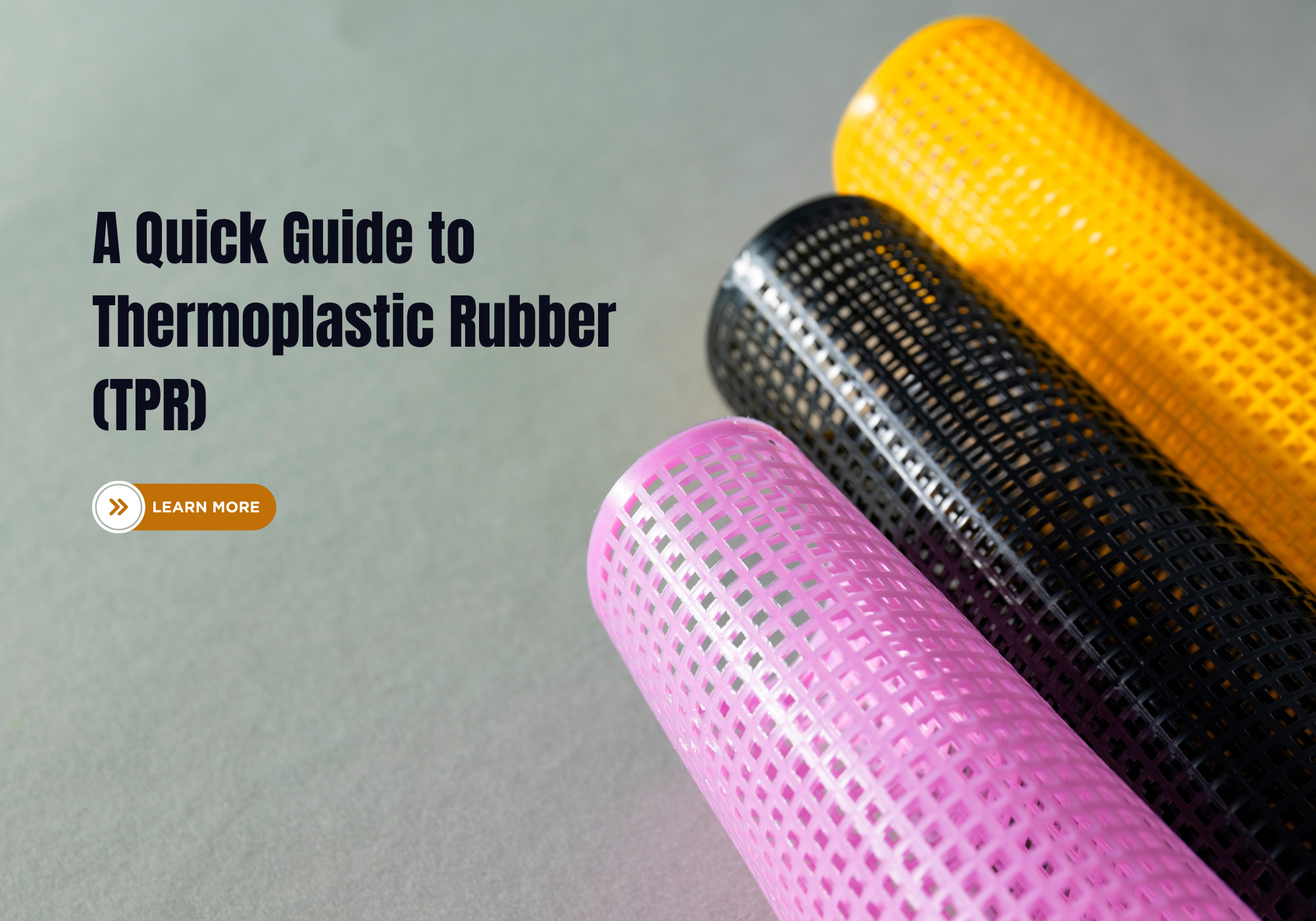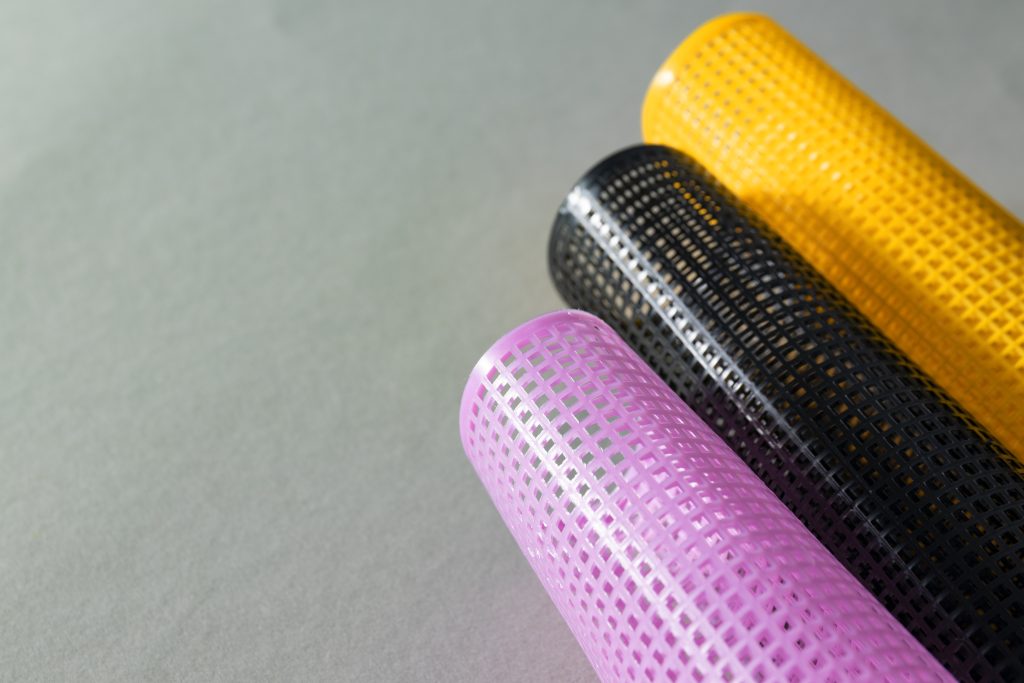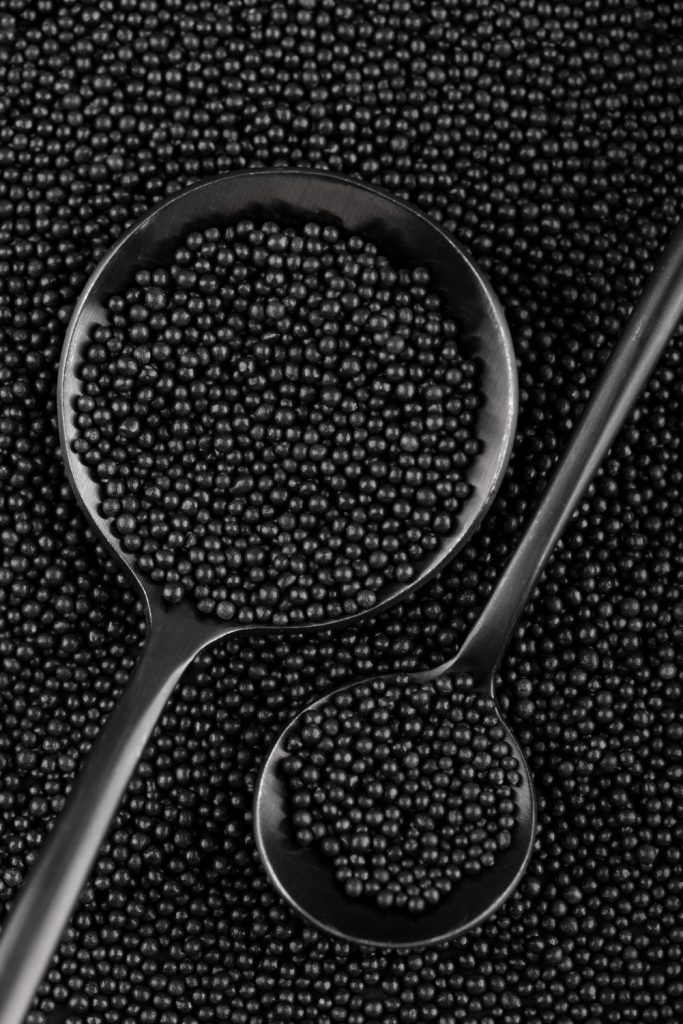
A Quick Guide on Thermoplastic Rubber (TPR)
Rubber is more flexible and durable than plastics and metal. Thus, it has become an essential material in our daily lives. We use it in shoes, car tires, toys, tools, and many more products. Thermoplastic rubber, also known as TPR, is artificial rubber made through chemical reactions.
The first rubber people used was natural rubber, which has many limitations. It can break down in heat or cannot withstand high stress. Besides, it is also not easy to recycle. To solve these problems, thermoplastic rubber was developed. Therefore, it is a modern material that offers higher stretchiness than plastic.
The manufacturing process of TPR is straightforward, like that of plastics. Thus, it is included in the large group of thermoplastic elastomers or TPEs. Thermoplastic is cheaper and very easy to work with. Due to this, we find it efficient and suitable for meeting high demands.
This article provides a brief overview of various topics related to Thermoplastic Rubber. You will learn its basics, like what it is, how it is made, its types, and its wide applications.
If you’re ready to start a rubber business, this article provides key insights. It will assist you in understanding the manufacturing process of TPR and its wide range of products.
Table of Contents
What is Thermoplastic Rubber?
Thermoplastic rubber (TPR) refers to the combined product of plastic and rubber. So, the properties of this product contain both rubber and plastic features. It is soft and flexible like rubber. Also, it can be molded like plastic. As the TPR is not rigid, it can stretch and return to its actual shape easily.
TPRs are comparatively light in weight and durable. You can recycle them after they get old or spoiled. Besides, there are other advantages of TPR, including physical, chemical, and mechanical. Because of this, TPR is widely used in many applications.
There are several types of TPR. Each type carries different features. These TPRs are usually made from thermoplastic styrene-butadiene rubber (SBS). There are other additive materials too, like resins, fillers, and plasticizers. Based on these materials, TPR types are typically categorized.
Overall, these TPRs have a broader variety in types, varying with the materials used. You have to utilize these types according to their suitability. This way, you will easily achieve better performance from every TPR product.

How is Thermoplastic Rubber Made?
As previously mentioned, TPR is derived from the combination of plastics and rubbers. So, to make TPR, all you need is to mix thermoplastic and rubber correctly. And this process is usually called the polymerization process.
First, thermoplastic mixes with small rubber particles. Then, an extruder machine blends them at high heat and pressure until they become tenuous. It is critical to note that TPR doesn’t go through vulcanization. It means they won’t set permanently like traditional rubbers.
Thereafter, the heat melts the plastics, so that the rubber can mix with them more evenly. This results in a soft, flexible, and moldable material. After mixing, TPRs get time to cool down and are cut into pellets for the next approach. At this stage, you can either supply these pallets to different manufacturers or move them to the next step for further shaping.
The next step is to use these pellets in machines like injection molding. An injection molding machine reshapes these pellets into various usable forms. You can create shoes, cases, seals, grips, or toys. Once the TPR is cooled inside the mold, you can take it out and prepare for shipping.
Key Properties of Thermoplastic Rubber
Thermoplastic rubber material possesses several properties that make it suitable for various applications. What are these properties? What role do they play in TPR products? Below, we will discuss these properties, which are categorized into three sections.
Mechanical Properties
TPR has excellent mechanical properties. Its flexibility and compatibility are the main reasons for its vast popularity. It can bend, twist, or endure stress without breaking.
Moreover, TPR has stretch features. This characteristic makes it suitable for the product that needs frequent moving or bending. You can think of shoes, grips, or soles.
TPR can also handle high-pressure resistance. You can think of places that involve frequent shocks. Besides, it has exceptional tear resistance. This means products will not rip or come apart even under excess force.
Abrasion resistance is another vital trait. TPR products can handle rough surfaces without wearing out. Because of this, these goods can serve both outside and for active items.
All these mechanical properties make TPR products last for a long time and increase their strength. Overall, their fine texture gives comfort for handheld goods.
Thermal Properties
Thermoplastic rubbers also come with excellent thermal properties. It heats and cools quickly. Therefore, during production, it offers excellent manufacturing efficiency. You can get faster molding cycles.
Since you can reheat and reshape TPR multiple times, it is typically easy to adjust the product. This flexibility usually reduces waste. Unlike traditional methods, TPR doesn’t need any curing and hardening. Thus, it minimizes production time and saves you from delay.
The melting point of regular TPR rubbers typically ranges from 190°C to 210°C. This tells you that you can easily process it with standard molding equipment. You may process thermoplastic rubber pellets using injection molding or extruder machines. The type of machine typically depends on the design complexity of the final part.
Thermoplastic rubber might not be suitable for extreme heat conditions. It is ideal for applications that do not involve high heat. However, TPR may lose strength or deform if exposed to extreme temperatures for long periods. Therefore, you must always consider operating conditions when using TPR products.
Chemical Properties
Thermoplastic rubber TPR exhibits strong chemical properties. More precisely, it can resist dilute acids, dilute alkalis, or grease. TPR products can easily handle mild acids like 5% sulfuric acid and 5% sodium hydroxide solutions. When tackling these elements, products lose their lowest mechanical properties. So, minimal loss won’t affect the overall performance.
As mentioned above, TPR products are safe in oily or greasy conditions. This advantage makes it suitable to use these products in automotive parts or gaskets. Additionally, TPRs can resist corrosion easily. They don’t even get rust in outdoor use. For this reason, you may deploy these products in various types of circumstances.
If necessary, you can use various additives to enhance resistance. Using additives increases durability, endurance, and performance.
Limitations of Thermoplastic Rubber
Although TPR has a wide range of benefits, it still has some limitations. As already mentioned, TPR is not ideal for high temperature uses. Extreme heat over time, my damage the product, eventually losing its integrity.
Besides, TPRs easily deform due to sustained pressure, which may lead to dimensional change. So, TPRs have lower load-bearing capacity. Moreover, these items need a drying step for processing, which is not necessary for traditional rubber.
Over time, TPRs gradually lose their elasticity from sunlight or harsh weather. These products also need additives to increase their lifespan in greasy conditions. Although they are highly flexible and easy to use, they are not ideal for industrial applications.
Popular Products of Thermoplastic Rubber
Thermoplastic rubber has significant applications in almost every sector. From daily use products to industrial working items, the range is vast. Usually, people rely on it for durability, efficiency, and flexibility. There are other benefits, too, that we have mentioned before. Below, we will talk about some popular products of TPR.

Footwear Industry
In the footwear industry, TPRs are widely used to make shoes, soles, rain boots, or waterproof shoes. Thermoplastic rubber is excellent against water. It is also highly resistant to slipping and very flexible. They are durable and lightweight as well. Its softness and comfort make it ideal for use in rainy seasons or for outdoor sports.
All these properties make TPR an ideal choice in the footwear industry. Consequently, this footwear is suitable for daily use.
Consumer Goods
Thermoplastic rubber, or TPR, has also contributed to making consumer goods. You may think of kitchen tools, toy parts, baby items, and many more. The use of TPR makes these items even more durable. Besides, TPR also makes these items safe and straightforward to use in daily life, especially for children.
Automotive Applications
Automotive parts made of TPR include gaskets, seal strips, trims, and soft-touch surfaces. You may also think of pedal covers, floor mats, and many more.
TPR resists wear and moisture and can minimize noise and vibration in vehicles. For this reason, people find it helpful for safe execution and better performance. Moreover, you may use these items to design interior parts.
Tools-Hardware-Medical Grips and Handles
To make various medical grips, hardware, tools, or handles, you can also use TPR as a raw material. Besides, TPR is also a good choice for making non-slip and soft materials.
TPRs ensure softness and comfort in hand grips during use. These items are skin-friendly and hygienic as well. Mostly, the medical sectors take advantage of these features. Also, they are resistant to chemicals and are perfect for precision tools.
Thermoplastic Elastomers vs Thermoplastic Rubber: What’s the Difference?
Thermoplastic elastomers (TPEs) are a group of materials that combine plastic and rubber. TPEs typically come with the qualities of both plastics and rubber. They are very flexible and offer the elasticity of rubber. All TPEs can be heated and melted to form various shapes. TPEs are very versatile materials and have a wide range of types.
For example, TP polyolefins are preferred for automotive parts and outdoor tools. TP vulcanizates are more likely to be rubber and can withstand extreme heat easily, serving in engine parts and seals. On the other hand, TP polyurethane is strong and used in sports gear, shoes, or cases. Apart from them, there are different types like TP polyamides, TP copolyester, and finally TPR.
TPR is a famous type of Styrenic Block Copolymer TPE. While it is flexible, it is not as resistant to heat and chemicals as TPV or TPU. TPRs are perfect for general-purpose usage.
Is Thermoplastic rubber better than silicone?
TPR and silicone have different properties and strengths. TPR is cheap, easy to use, and moldable. Changing shape is not a big deal here. It is suitable for soles, shoes, toys, and other similar items. People prefer it for its rapid and low-cost efficiency.
Silicones, on the other hand, are relatively strong, stable, and heat-resistant. It can work well at extreme temperatures without causing any damage. Silicones have better chemical resistance but are not suitable for recycling. Also, they are not cost-effective like TPRs.
How to clean Thermoplastic Rubber?
Cleaning thermoplastic rubber is relatively easy. First, take a soft cloth and remove the dust or dirt from the surface. In some cases, you can use mildly heated water or soap to clean off the surface. Avoid using chemical substances, as they may damage the material.
For patterned or grooved areas, you can use a soft brush. Then, use rinse water and wipe it with a dry towel or let it dry itself for reuse. If there is any sticky or oily dirt, use alcohol rubbing on a cloth. Before starting to clean, always test it on a small area first to ensure they are safe to use.
Frequently Asked Questions
Is Thermoplastic Rubber Toxic?
Thermoplastic rubber (TPR) is not toxic. It is safe for use in baby products, food contact items, or toys. TPR does not contain any harmful chemical elements, which may pose a health risk. It’s a non-toxic and authorized substance.
Is Thermoplastic Rubber Safe?
Yes, Thermoplastic rubber is safe for most uses. It’s a skin-friendly, harmless, widely approved material that is also used in the medical sector.
Does Thermoplastic Rubber Contain Latex?
TPR usually does not contain natural latex. Manufacturers use synthetic rubber and plastic to build them. That’s why TPR is an ideal choice for people with latex allergies. You can also use it as an alternative to latex material.
Final Words
Thermoplastic rubber is easy to mold and can be formed into a wide range of shapes. It is also recyclable, but you must know how to do it efficiently. Due to this, thermoplastic rubber offers a wide range of possibilities for producing various types of products. It’s a profitable business and has a high ROI.
Ready to start your first rubber project? You might also want to learn more about elastomers. Stay tuned and read our daily blogs. If you have any questions about rubber and its products, feel free to contact us.